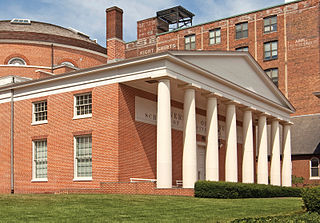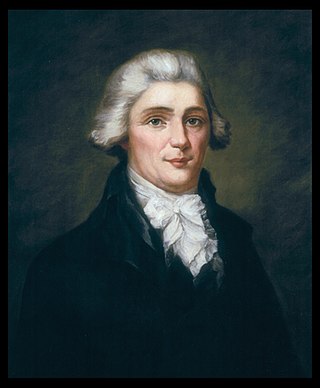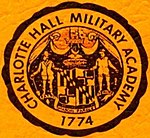
Thomas Johnson was an 18th-century American lawyer, politician, and patriot. He was a delegate to the First Continental Congress in 1774, where he signed the Continental Association; commander of the Maryland militia in 1776; and elected first (non-Colonial) governor of Maryland in 1777. Throughout his career, Johnson maintained a personal and political friendship with George Washington, who gave him a recess appointment as an associate justice of the Supreme Court in August 1791. He served only briefly, resigning in January 1793, citing poor health.

The University of Maryland, Baltimore (UMB) is a public university in Baltimore, Maryland. Founded in 1807, it comprises some of the oldest professional schools of dentistry, law, medicine, pharmacy, social work and nursing in the United States. It is the original campus of the University System of Maryland and has a strategic partnership with the University of Maryland, College Park. Located on 71 acres (0.29 km2) on the west side of downtown Baltimore, it is part of the University System of Maryland.

The Maryland State House is located in Annapolis, Maryland. It is the oldest U.S. state capitol in continuous legislative use, dating to 1772 and houses the Maryland General Assembly, plus the offices of the Governor and Lieutenant Governor. In 1783 and 1784 it served as the capitol building of the United States Congress of the Confederation, and is where Ratification Day, the formal end of the American Revolutionary War, occurred.

Christopher Greenup was an American politician who served as a U.S. Representative and the third Governor of Kentucky. Little is known about his early life; the first reliable records about him are documents recording his service in the Revolutionary War where he served as a lieutenant in the Continental Army and a colonel in the Virginia militia.

Thomas Parran was an American physician and Public Health Service officer. He was appointed the sixth Surgeon General of the United States from 1936 to 1948, and oversaw the notorious Tuskegee syphilis experiment and Guatemala syphilis experiment.

Green Mount Cemetery is a historic rural cemetery in Baltimore, Maryland, United States. Established on March 15, 1838, and dedicated on July 13, 1839, it is noted for the large number of historical figures interred in its grounds as well as many prominent Baltimore-area families. It retained the name Green Mount when the land was purchased from the heirs of Baltimore merchant Robert Oliver. Green Mount is a treasury of precious works of art, including striking works by major sculptors including William H. Rinehart and Hans Schuler.

James Thomas served as the 23rd Governor of the state of Maryland in the United States from 1833 to 1836. He practiced medicine and served as judge in several courts throughout Maryland, and served in the Maryland State Senate from 1824 to 1830.

Thomas Edward Perez is an American politician and attorney currently serving as senior advisor to the president of the United States and director of the White House Office of Intergovernmental Affairs, holding both positions since June 2023. Perez previously served as the United States Secretary of Labor (2013–2017), the chair of the Democratic National Committee (2017–2021), and United States Assistant Attorney General for Civil Rights (2009–2013).
The Fendall family was a prominent American political family that had its beginnings when Englishman Josias Fendall immigrated to the Province of Maryland in the early 1650s. He was appointed as the fourth proprietary governor of Maryland from 1656 to 1660.

Liberty Hall, also known as the Governor William Livingston House, located on Morris Avenue in Union, Union County, New Jersey, United States, is a historic home where many leading influential people lived. It was documented by the Historic American Buildings Survey (HABS) in 1938. The house was added to the National Register of Historic Places as a National Historic Landmark on November 28, 1972, for its significance in politics and government. It is now the Liberty Hall Museum.

Charlotte Hall Historic District is a national historic district in Charlotte Hall, St. Mary's County, Maryland. It encompasses a small village along "Old Route 5." It includes 13 recorded buildings and sites of historic and/or architectural interest as well as the main campus of the Charlotte Hall Military Academy.

Rose Hill Manor, now known as Rose Hill Manor Park & Children's Museum, is a historic home located at Frederick, Frederick County, Maryland. It is a 2+1⁄2-story brick house. A notable feature is the large two-story pedimented portico supported by fluted Doric columns on the first floor and Ionic columns on the balustraded second floor. It was the retirement home of Thomas Johnson (1732–1819), the first elected governor of the State of Maryland and Associate Justice of the United States Supreme Court. It was built in the mid-1790s by his daughter and son-in-law.

William Paca was a Founding Father of the United States who was a signatory to the Continental Association and the United States Declaration of Independence. He was a Maryland delegate to the First Continental Congress and the Second Continental Congress, governor of Maryland, and a district judge of the United States District Court for the District of Maryland.
Events from the year 1789 in the United States. The Articles of Confederation, the agreement under which the nation's government had been operating since 1781, was superseded by the Constitution in March of this year.
Events from the year 1790 in the United States.
The Columbian Institute for the Promotion of Arts and Sciences (1816–1838) was a literary and science institution in Washington, D.C., founded by Dr. Edward Cutbush (1772–1843), a naval surgeon. Thomas Law had earlier suggested of such a society "at the seat of government." It was the first "learned society" established in Washington and was organized on June 28, 1816, sixteen years after the city was occupied, and less than two years after the invasion by the British troops. The second article of its constitution states: "The Institute shall consist of mathematical, physical, moral and political sciences, general literature and fine arts."

John Buchanan was a Maryland politician and long-serving Justice of the Maryland Court of Appeals, sitting on the court from 1806 to 1844, and serving as chief justice from 1824 to 1844.
Justice Buchanan may refer to:














